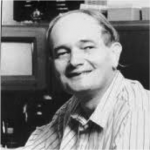Scientific Presentations
SoCal Flow Program Committee is honored to host these distinguished faculty for the scientific program presentations.
David Hedley MD PhD (Senior Scientist and Senior Staff Physician, Medical Oncology Department and Ontario Cancer Institute, Princess Margaret Hospital, University of Toronto, Canada) : Emerging Applications of Flow Cytometry in Molecular Oncology
The clinical landscape of molecular cancer therapeutics is shifting. Expectations that dramatic responses to signal transduction inhibitors, similar to those seen in CML patients treated with imatinib, have not been realized. Since it is likely that most oncogenic targets have now been identified, with effective inhibitors available for clinical testing, the emphasis is shifting towards combinations of targeted agents and the challenge is patient selection for specific drug combinations (recognizing that all of these agents have side effects). Despite early optimism, a deluge of genome sequencing data has failed to identify significant numbers of previously unknown druggable targets. These genomics studies have also rediscovered the analytical complexity of tumor heterogeneity, which is what flow is all about! On the other hand, there is major interest in the areas of epigenetic and metabolic regulation of cancers, which might be more tractable in terms of novel treatments, and those fields are currently wide open for translational research. So it is timely to review the potential for flow cytometry in the field of molecular oncology. In this talk I will overview some practical issues, particularly the development and optimization of novel flow techniques that can be applied to patient samples linked to clinical trials of targeted agents. I will emphasize applications where I believe that flow has a competitive edge relative to alternative approaches.
Pratip K. Chattopadhyay PhD (ImmunoTechnology Section, Vaccine Research Center, NIAID, NIH): The Twists and Turns of High Dimension HIV Research
The immune system is remarkably complex, consisting of hundreds of molecules that govern the differentiation and function of leukocytes. In combination, these markers can define an enormous number of cell subsets, complicating efforts to understand the most important cell types involved in an immune response. Nevertheless, this understanding is fundamental to our vaccine and treatment efforts in HIV. In this talk, I will describe our recent research into HIV immunity, and the lessons learned from it that our relevant to the design and analysis of polychromatic flow cytometry experiments. I will highlight new tools we have developed for automated analysis of data sets, and how these tools are able to reduce the complexity of immune analysis, and reveal the most important cell subsets involved in disease.
Julie E. Lang, MD FACS (Associate Professor of Surgery, University of Southern California, Division of Breast and Soft Tissue Surgery and Principal Investigator of Breast Surgical Oncology Translational Research Laboratory, Norris Comprehensive Cancer Center): Isolation and Molecular Profiling of Circulating Tumor Cells in Breast Cancer
Background: Metastasis is responsible for virtually all breast cancer related deaths. Detection of circulating tumor cells (CTCs) has been demonstrated to correlate with worse prognosis in both metastatic and non-metastatic breast cancer (MBC) patients. CTCs, unlike most of the cancerous cells in primary tumors, have the ability to leave the primary tumor, enter the bloodstream, and may explain disease recurrence even after a prolonged disease free interval. Our team has developed a novel assay that captures rare CTCs from peripheral blood via a simple blood draw. Small populations of pure CTCs can be isolated for downstream molecular analyses. To our knowledge, our group is the first to develop a method for the isolation and very detailed molecular profiling of pure populations of CTCs in breast cancer.
Methods: Our group uses novel technology to study the significance of detailed molecular profiling of CTCs in all stages of breast cancer. CTCs are isolated by immunomagnetic enrichment followed by multi-marker fluorescence activated cell sorting to acquire pure populations of CTCs. We utilize gene expression microarrays, next generation sequencing, quantitative real-time PCR and rare target validation using RNA-specific flow cytometry that amplifies signal detection.
Hypotheses: In an ongoing study of Stage IV breast cancer patients, we hypothesize that molecular profiling of circulating tumor cells may provide a suitable alternative to more invasive biopsies of metastatic sites in breast cancer patients. In an ongoing study of Stage II-III breast cancer patients, we hypothesize that gene expression profiling of CTCs may be a clinically useful biomarker to predict response to neoadjuvant chemotherapy in locally advanced breast cancer.
Conclusions: We provide proof of principle preliminary data that it is feasible to profile rare CTCs. This approach could potentially lead to an effective strategy to personalize therapies based on a real time assessment of micrometastatic disease and ultimately could lead to a reduction in mortality by better individualizing care.
Bartek Rajwa PhD (Research Assistant Professor Bindley Bioscience Center, Purdue University): Signal formation and generalized compensation theory for multispectral and hyperspectral flow cytometry systems
The process of spectral unmixing is routinely employed in flow cytometry (under the name of “compensation”) and in image cytometry (automated microscopy and high-content-screening). In the broadest sense, unmixing is a procedure that allows for identifying individual signal constituents as well as the abundances in which they appear in single multispectral measurements (single cells in flow, or single pixels in imaging).
In flow cytometry (FC) these measurements, which involve acquisition of fluorescence from labels attached to biomarkers, are traditionally represented mathematically as linear mixtures of pure signals contaminated by noise. Technically, spectral unmixing can be seen as a simple case of the inverse problem that estimates abundance of the labels from noise-contaminated observations of their fluorescence signals. During the unmixing step every measured data vector (describing a single cell, or an individual pixel in imaging) is decomposed into a set of spectral signatures (mixing matrix) and a set of corresponding abundances.
With the introduction of multispectral flow cytometry using a number of channels larger than the number of labels, a rigorous approach to unmixing incorporating a realistic noise model became possible. This presentation will discuss a physics-based model in which FC measurements are approximated by Poisson or Gamma processes, and unmixing (compensation) is performed using a GLM framework. This approach allows recovery of true biomarker concentrations, improves the resolution, and avoids generation of artifactually spread or negative populations following the compensation.
The presentation will discuss in depth the theoretical aspects of compensation, starting with the two-color model proposed by Loken (1977), via the multicolor compensation proposed by Bagwell and Adams (1993), to generalized multispectral cytometry unmixing conceptualized by Rajwa and Novo (2012). The talk does not require a thorough background in mathematics, physics, or statistics. However, a basic understanding of fluorescence-signal formation and college-level algebra will be assumed.
Peter J. Burke PhD, (Professor, Department of EECS, Department of Biomedical Engineering, Department of Chemical Engineering and Materials Science, University of California, Irvine): Nanofluidic Based Assays of Mitochondria
In this talk we will present our recent work on combining nanotechnology, electrophysiology, metabolomics, and cancer research. These concepts all converge in the interrogation mitochondria, organelles that traditionally have been associated only with the production of ATP from pyruvate. Recent studies have shown they have a critical role in calcium signaling and regulation, as well as regulation of cell death. In our experiments, we use nanochannels to trap and interrogate optically the response of individual mitochondria isolated from cells to various chemical environments, including substrates and inhibitors of the electron transport chain as well as calcium induced depolarization of the membrane potential, the point of no return in apoptosis. This will be contrasted with the use of traditional flow cytometry to assay properties of sub-cellular organelles.
Alexander D. Boiko PhD (Molecular Biology & Biochemistry, University of California, Irvine): Targeting CD271+ Melanoma Tumor Initiating Cells Synergizes with CD47 Blockade to Prevent Multiple Organ Metastasis In-Vivo
Melanoma is one of the deadliest types of tumors and accounts for 79% of skin cancer deaths. The five-year survival rate for people whose melanoma is detected and treated before it spreads to the lymph nodes is around 90%. However, patients diagnosed with more advanced stages of the disease have a grim outlook with 5 year survival rate down to 65% for regional metastatic disease and 15% for distant metastasis. Despite significant effort, no long term effective therapies exist for advanced metastatic melanoma. Our laboratory has recently identified melanoma tumor initiating cells (MTICs) as CD271+ population from patient surgical samples (1). We have now established robust in-vivo model demonstrating that tumors arising from CD271+ population are capable of forming regional lymph node metastasis as well as colonize distant organs such as lungs and liver. We show that in addition to CD271 many metastatic melanomas express CD47. As was recently discovered by our lab, CD47 appears to be a key cell surface signal whose overexpression protects hematologic tumor cells from being eaten and eliminated by the cells of the immune system, macrophages (3, 4). Using in-vivo metastatic melanoma model we demonstrate that selective targeting of MTICs with CD271-Saporin conjugated antibody alone and in combination with CD47 blocking antibody dramatically reduces and in some cases completely eliminates regional and distant metastasis in NSG mice transplanted with aggressive melanoma cells isolated from patient sample. By analyzing publicly available melanoma array datasets we also reveal significant correlation between expression of CD47 and decreased survival of melanoma patients diagnosed with advanced stages of this disease.






